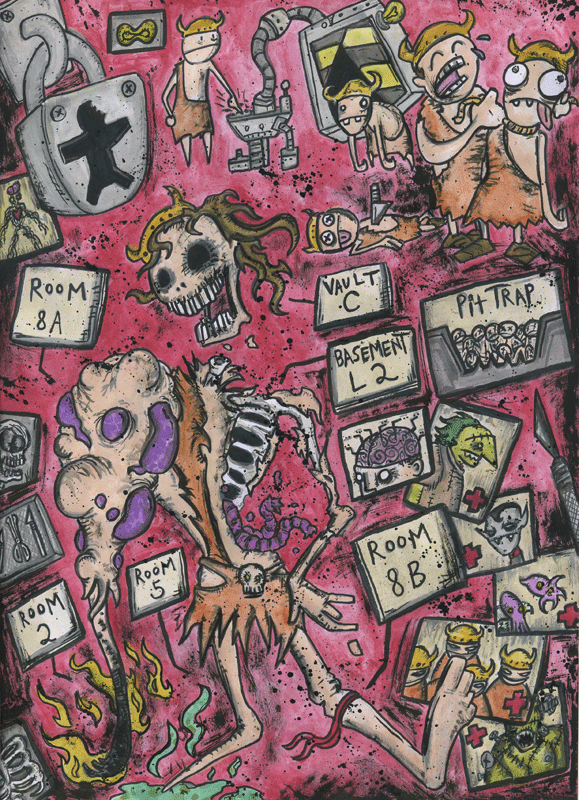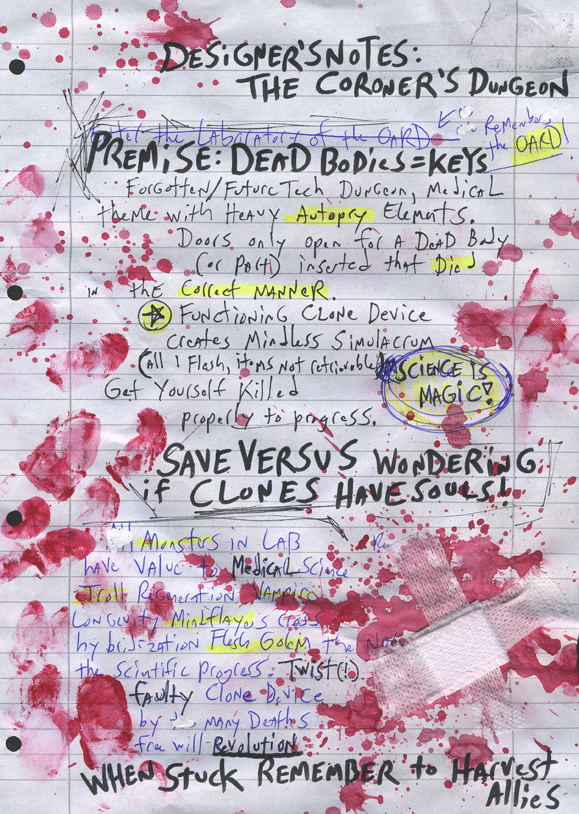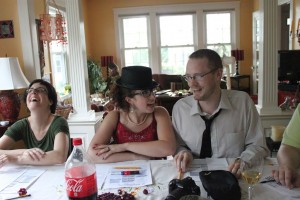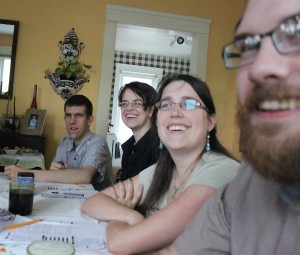Last time, I described the first part of a D&D 5e playtest set in 1912 England. Today I’ll continue the adventure. The second half of the adventure took place deep in the Atlantic ocean, on the sunken Titanic.
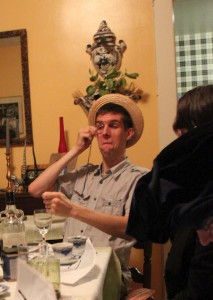 When the PCs decided to explore the sea bottom, the character with the “Tycoon” background decided to consult his weather wizard. He just decided that that was something that a tycoon should have, and it sounded like a good idea to me. I had the weather wizard give everyone the ability to breathe and move freely under water.
When the PCs decided to explore the sea bottom, the character with the “Tycoon” background decided to consult his weather wizard. He just decided that that was something that a tycoon should have, and it sounded like a good idea to me. I had the weather wizard give everyone the ability to breathe and move freely under water.
Rory, who had a Naval Officer background, asked if he had a ship. I decided that he had a sloop he could use to get to the coordinates of the Titanic wreck. Furthermore, I decided that he knew a dishonest quartermaster who would sell the characters the following naval equipment:
An experimental submarine: the owner is asking 15k. (I intentionally priced this so high that the players couldn’t buy it with the money they had. I was curious if they’d be able to get their hands on it anyway.)
Underwater diving suits: 700 GP each. Underwater, these act like +1 heavy armor, and above water, they are extremely cumbersome.
Spidersilk swim trunks: For characters who wear cloth armor, these extremely modest Victorian bathing suits give a +1 AC bonus.
The tycoon decided to buy upgraded armor for everyone, but he didn’t think we needed the submarine.
 Laura K, the swindler rogue, really wanted the submarine. She talked to the quartermaster privately. A few Charisma checks later, and he revealed that there was said to be a fabulous diamond on board the Titanic when it sank. If she would obtain the diamond for him, he’d give her the submarine. Showing a touching faith in her honor, he handed her the keys (or however you give someone possession of a submarine).
Laura K, the swindler rogue, really wanted the submarine. She talked to the quartermaster privately. A few Charisma checks later, and he revealed that there was said to be a fabulous diamond on board the Titanic when it sank. If she would obtain the diamond for him, he’d give her the submarine. Showing a touching faith in her honor, he handed her the keys (or however you give someone possession of a submarine).
under the sea
I planned a cool fight for the PCs against a giant kraken. Because the PCs had a submarine, I didn’t use it as written. Here’s what I planned:
The Titanic is lying on the sea bottom, broken into two pieces. A giant kraken is clinging to the broken cross-section of the front half, reaching inside and pulling out bodies, which it drops into its beak. When it sees you, it wriggles its fins and heads towards you.
The kraken body has some huge number of HP, like 300, and the PCs are better off attacking the tentacles, which have 30 HP each and a reach of 20 or 30 feet.
Every turn, the kraken can attack up to four PCs with up to four of its eight tentacles (doing 3d6+4 damage on a hit). On a hit, the subject is grabbed and needs to use his or her next turn to escape. On the kraken’s turn, all grabbed creatures take 2d6 damage. Tentacles currently holding PCs can’t make attacks; nor can tentacles that have taken 30 points of damage.
If anyone decides to attack the kraken’s eyes, they may do so: each eye has 30 HP. Anyone who attacks an eye will be the subject of two tentacle attacks on the next turn.
I had a roll of black crepe paper. I was planning to extend a piece of it to anyone grabbed by the kraken and ask them to tape it to their clothes.
I don’t know how this fight would have gone, because the PCs had the submarine. They had negotiated with the port’s quartermaster for three torpedoes as well.
 I like big numbers, so i decided that each torpedo did 1d100 damage. Since firing the torpedo was a Dexterity attack, Rory, the sea captain, ceded control of the torpedoes to his cousin, Lady Glossop, a noted archer with a keen eye.
I like big numbers, so i decided that each torpedo did 1d100 damage. Since firing the torpedo was a Dexterity attack, Rory, the sea captain, ceded control of the torpedoes to his cousin, Lady Glossop, a noted archer with a keen eye.
3d100 damage later, the kraken was reeling. The characters swam out of the submarine to finish it off with a round of ranged attacks that dropped it to 2 HP.
In the last round of combat, the kraken rolled very poorly for initiative. I announced that if any PC could do 2 points of damage this round, the kraken would be killed before it could attack.
The wizard announced, “Magic missile! Autohit for 1d4+1 damage!” And the mighty beast died.
That battle was a cakewalk for the PCs. I liked that it was a cakewalk because of the PCs’ actions. The rogue made a special effort to get the submarine, and the players were rewarded for it.
In the Ballroom
The PCs knew that they were looking for a safe on the C deck of the Titanic. When they left the submarine and stood on the ship’s deck, they saw stairs leading down. They also saw a deck-side ballroom, around which dozens of ghosts were gathering.
There was really no reason to investigate the ballroom, but the players were curious, as I thought they might be. Here are my notes for the ballroom:
The main ballroom is swarming with spirits. Normally, anyone who goes into the ballroom will see flitting white shapes and take 1d20 damage per round from their ghostly aura. Clerics, or those in a spiritual state of some kind, will instead see the ballroom the way it was the night of the accident.
There is a full orchestra in evening dress, and a small choir. On the dance floor are many groups of people talking quietly to each other and asking strangers (like the PCs) for news. “We heard a crash! Did we hit anything?” There is a rumor going around that the ship is sinking.
The band is worried that they may drown. If asked to play music, the bandleader will say that this is no time to dance. The PCs must convince the band. it should take 2+ of the following methods (or one really good one:)
AFTER ONE SUCCESS: After one success, the bandleader will clearly be wavering. He lifts his baton and is about to strike up the band. Then, cold, black water starts flowing along the floor of the ballroom, getting peoples’ feet wet. People start screaming. The bandleader lowers his baton and looks to the PCs for advice. He will require a second success to make him play the song, preferably a success of a different type.
SUCCESSES
-Good reasoning (it will buck up the people and keep up morale! etc)
-An inspiring speech (or a good charisma check)
-PCs starting to play instruments or hum or dance
-any form of magical compulsion
-offer them blood to drink (they will lap up the blood but still not admit that they are ghosts)
-any other interesting trick
FAILURES
FIGHTING: If the PCs offer violence or intimidation, four gentlemen in the crowd will yell “This is no time for violence!” and try to grab the most obnoxious PCs (they make attacks at +5; on a hit, they do no damage, but the PCs are Grabbed. Grabbed PCs must spend their actions making an escape attempt. If PCs attempt further violence, the ghosts will flip out.
TELLING THE TRUTH: If the PCs tell the ghosts that they are ghosts, or that the Titanic has already sunk, the ghosts will flip out.
GHOSTS FLIPPING OUT: If the PCs escalate the violence, the civilians will become more obviously spectral and start flying around the ballroom. Each PC will be attacked by two ghosts each (roll initiative).
CONVINCING THE BAND
If successful, the band will strike up “Autumn” by Louis Von Esch. Go here and press Play:
http://www.loc.gov/jukebox/recordings/detail/id/2700/
After a few moments, all the people in the room will start waltzing. Spectral ghosts will flow into the ballroom from all directions. As soon as they enter the ballroom, they will turn into richly dressed couples and start dancing.
The way it worked out was even better. One of the clerics convinced the bandleader to play, and then convinced panicked passengers to dance. “It might be your last chance,” he said, truly.
Meanwhile, the tycoon, who had the ability to interact with the spirit world because of a 5e class feature, asked if he saw the dead heirs or anyone he knew. I said that he saw the ghost of his old friend, the millionaire John Astor. John Astor said something like, “There’s a lot of noise about this ice collision, but the Titanic is unsinkable. Everyone is overreacting. Will you play a game of cards with me?”
The tycoon agreed to a game of cards – agreeing to take several rounds of damage from the ghosts’ auras. He wanted to make a Bluff check to let his friend John Astor win one last game of cards.
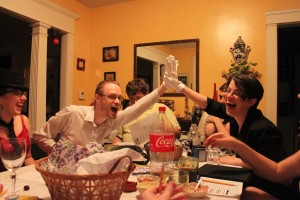 A Bluff check was made. There was a pause. “You always were a terrible bluffer, old friend,” Astor said. (The players sighed in disappointment.) “I could tell right away you had terrible cards. I have a full house!” (The players cheered!) John Astor, happy in his last victory, faded away!
A Bluff check was made. There was a pause. “You always were a terrible bluffer, old friend,” Astor said. (The players sighed in disappointment.) “I could tell right away you had terrible cards. I have a full house!” (The players cheered!) John Astor, happy in his last victory, faded away!
This scene was actually a tiny bit touching. The mournful musical cue, which I played from a laptop and which was actually the last song played on the Titanic, really helped set the mood.
Next time: The players wrap up the Titanic dungeon crawl!
